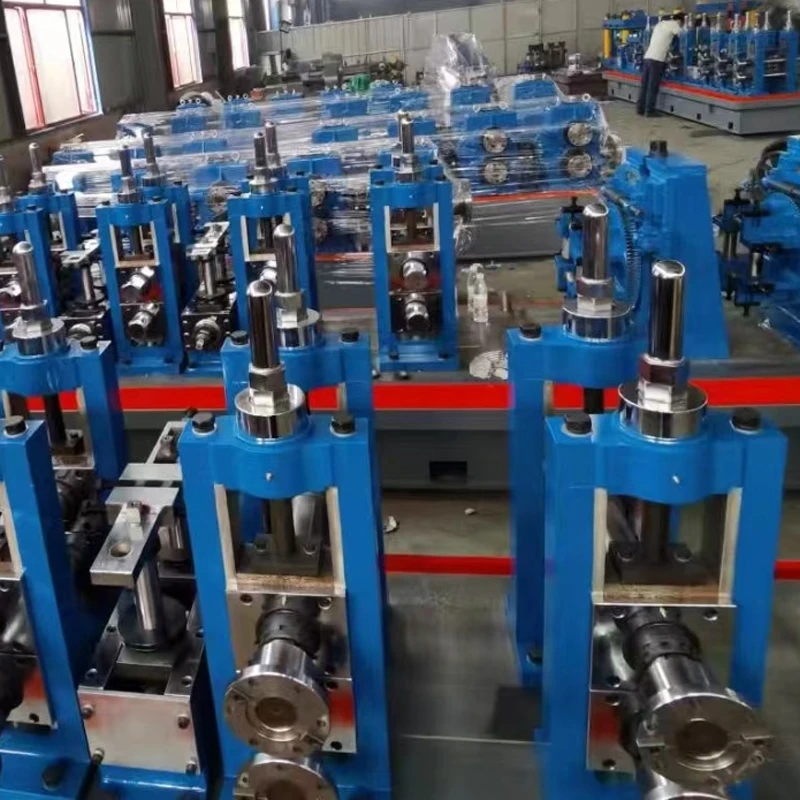Innovative Design of Two Roller Mills for Efficient Material Processing and Grinding Techniques
The Two-Roller Mill An Essential Tool in Modern Industry
In various industrial processes, the efficiency and effectiveness of material processing are paramount. One such machine that has proven to be indispensable in many applications is the two-roller mill. This equipment is widely used in the fields of rubber, plastics, food processing, and more. As industries continue to seek ways to enhance productivity, understanding the two-roller mill's design, functionality, and applications becomes increasingly important.
Design and Functionality
At its core, a two-roller mill consists of two horizontally positioned rollers that rotate in opposite directions. These rollers can vary in diameter and length, allowing for customization based on the specific requirements of the material being processed. The primary function of the two-roller mill is to crush, grind, or homogenize materials by applying shear and compressive forces. As materials are fed into the mill, they are entrained between the rollers, where the mechanical action reduces their particle size and improves their uniformity.
The gap between the rollers can often be adjusted to control the degree of grinding or mixing, making the two-roller mill a versatile tool. Additionally, the rollers can be heated or cooled, allowing for the processing of temperature-sensitive materials. This adaptability helps manufacturers fine-tune their processes and achieve desired material properties.
Applications Across Industries
One of the most prominent applications of the two-roller mill is in the rubber industry. Here, it is used to mix raw rubber compounds with various additives, such as carbon black, sulfur, and processing oils. The two-roller mill ensures that these ingredients are uniformly dispersed throughout the rubber matrix, enhancing properties such as tensile strength and elasticity. The ability to control roller temperature also helps manage the viscosity of the rubber, further optimizing the mixing process.
two roller mill

In the plastics industry, two-roller mills play a crucial role in the compounding of polymers. By mixing different plastic resins with additives such as colorants, fillers, and stabilizers, manufacturers can create custom formulations that meet specific performance criteria. The equipment's efficiency in achieving a homogenous blend makes it an essential component in producing high-quality plastic products.
The food processing sector also utilizes two-roller mills for various applications, including grinding grains, milling sugar, and processing cocoa. In these cases, the rollers help achieve a consistent particle size, which is crucial for ensuring product quality. For example, in chocolate production, the grinding of cocoa nibs in a two-roller mill aids in the creation of a smooth chocolate paste by reducing particle size and promoting even dispersion of fats.
Benefits and Challenges
The two-roller mill offers several advantages that contribute to its widespread use in industry. Its simple design leads to ease of operation and maintenance, which can reduce downtime and production costs. The mill's versatility allows it to handle a wide range of materials, making it a cost-effective solution for many applications.
However, there are challenges associated with using a two-roller mill. One commonly noted issue is the wear and tear on the rollers, especially when processing abrasive materials. Proper maintenance and timely replacement of worn parts are crucial to ensure the longevity of the machinery. Additionally, operators must be well-trained to understand the intricacies of the milling process, as improper adjustments can lead to suboptimal product quality.
Conclusion
The two-roller mill is a critical asset to various industries, providing efficient and effective processing of materials. Its ability to mix, grind, and homogenize a wide array of substances makes it an essential tool in rubber, plastics, food processing, and beyond. As industries continue to evolve and innovate, the two-roller mill's role will likely expand, driven by advancements in technology and the ever-increasing demand for high-quality materials. Understanding its functionality and applications will enable industries to maximize their productivity and enhance their products, ultimately benefiting consumers and businesses alike.
-
High Frequency Straight Seam Welded Pipe Production Line-BzZhou Xinghua Machinery Equipment Manufacturing Co., LTD.|Precision Welding, High EfficiencyNewsJul.30,2025
-
High Frequency Straight Seam Welded Pipe Production Line|BzZhou Xinghua|Precision Welding&EfficiencyNewsJul.30,2025
-
High Frequency Straight Seam Welded Pipe Production Line - BzZhou Xinghua|Precision Engineering&EfficiencyNewsJul.30,2025
-
High-Frequency Straight Seam Welded Pipe Production Line-BzZhou Xinghua Machinery Equipment Manufacturing Co., LTD.NewsJul.30,2025
-
High-Frequency Straight Seam Welded Pipe Production Line-BzZhou Xinghua Machinery Equipment Manufacturing Co., LTD.|Precision Manufacturing, High EfficiencyNewsJul.30,2025
-
High Frequency Straight Seam Welded Pipe Production Line-BzZhou Xinghua Machinery Equipment Manufacturing Co., LTD.|Precision Steel Pipe Manufacturing&Industrial EfficiencyNewsJul.29,2025


